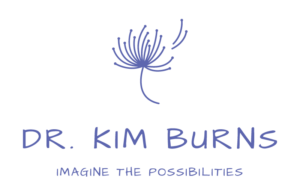The Power of Inclusive Strategic Planning
When community college leaders envision future priorities, I can guarantee they are not only considering stakeholders within the metaphorical walls of the institution. Community colleges play a vital role in local and regional economic, community, and workforce development. They enjoy symbiotic relationships with many partners whose voices and perspectives can strengthen the effectiveness of a college’s strategic plan.
Strengthening Higher Ed Strategic Plans Through Inclusion
We know that an inclusive process is necessary for a strong plan but how, exactly, do you pull this off? Including faculty, staff, students and the many friends of the college, such as employers, K-12 district leaders, municipal leaders, community-based organization directors, and religious leaders, in your planning process can feel daunting. Everyone is so busy! Will they want to participate? How do we use their time effectively? Inclusive processes require more effort as well as thoughtful planning and facilitation.

Four Methods for Inclusive Strategic Planning
Large group forums
Strategic planning forums are one way to gather input from a large number of people in a short amount of time. Forums can be for targeted groups (e.g., faculty and staff; students; Board of Trustees, community partners) or can be an intentional mix. Forums can be held at the beginning of the process using the SOAR framework or at the end for a reality check on draft goals, objectives, and metrics. Bringing together large groups is an opportunity to create a fun atmosphere (I remember one such experience where colorful art supplies were used to create a 3D representation of the future).
For large group forums to be successful, they need to be carefully choreographed so the participants’ time is used efficiently and the data needed to create the plan is collected. Clear instructions, succinct guiding discussion questions, and a structured timeline will result in a successful event. For the most recent large forums I’ve been involved with, I stressed out most about capturing the data from participant conversations. There are many ways to capture data from participants. Each table can have a facilitator responsible for capturing notes that can be documented on a worksheet that is later submitted and transcribed. A note taker can capture notes in an electronic form. Flip chart paper and sticky notes are also trusty tools to capture the input you need. However data is recorded, it is critical that it is collected or else you will have hosted a nice social gathering without a purpose.
One-on-one interviews
One-on-one interviews are the foundational tool of the appreciative inquiry process. People are invited to come together and pair up to share stories of exceptionally positive moments in the organization, identify shared values, and explore wishes for the future. My most recent experience with this method involved scheduling several meeting times where employees could show up on Zoom, be paired with a colleague, and join a breakout room to interview each other. In parallel, key staff connected with external partners to interview them using a similar interview guide. The same concern with data collection applies to one-on-one interviews. Clear instructions regarding how to submit data must be emphasized or else the effort is moot.
Surveys
Online surveys are a helpful tool for gathering input from stakeholders who aren’t able to attend a live event as well as for capturing additional ideas and feedback that stakeholders want to add to the data collection. Surveys can also be used to get targeted feedback on a particular topic or on draft goals, objectives, and metrics. I view surveys as a supplement to live, synchronous conversations.
Conversations at established meetings
Adding discussions to established meetings, such as governance and advisory board meetings, allows you to efficiently gather input from stakeholders. This approach requires the ability and authority to shape the agenda so you can spend adequate time on guiding questions that will get you the input you need. I’ve seen this approach used with governing boards and legislative delegations who are limited on time and attention.
Keys to Success in Inclusive Strategic Planning
The keys to success for gathering input from multiple stakeholders are expert facilitation, organization, and clear communication so participants know what is expected of them. This allows them to focus on giving their insight on the future direction of the college. Their ideas need to be captured, documented, and collected so they can be analyzed and inform a draft plan.
Strategic planning can be very exciting! What is your experience with contributing your ideas to shape the future of an organization? Share with me at [email protected] or on LinkedIn. You can also sign up for my newsletter.

